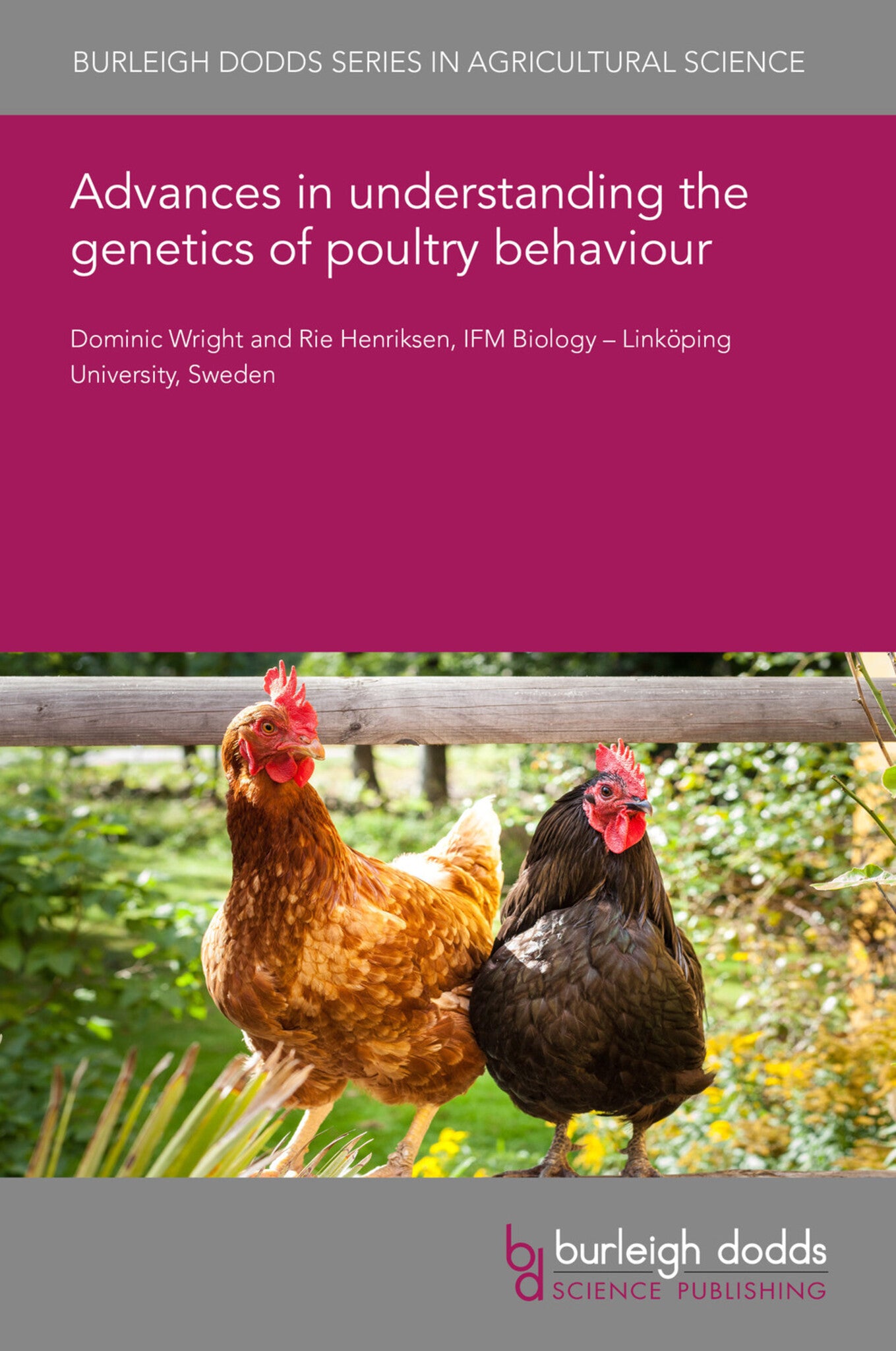We're sorry. An error has occurred
Please cancel or retry.
Advances in understanding the genetics of poultry behaviour
Regular price
£25.00
Sale price
£25.00
Regular price
£0.00
Unit price
/
per
Sale
Sold out
Re-stocking soon
Understanding the genetics underlying quantitative traits and identifying the causal genes and polymorphisms that are causal to these traits is hard at the best of times, but in the case of behavio...
Read More

Some error occured while loading the Quick View. Please close the Quick View and try reloading the page.
Couldn't load pickup availability
- Format:
-
28 September 2020

Understanding the genetics underlying quantitative traits and identifying the causal genes and polymorphisms that are causal to these traits is hard at the best of times, but in the case of behaviour, the more modest heritabilities and repeatabilities involved make these tasks even more challenging. Understanding the genetics of behavioural traits can have large ramifications for not only welfare (to try and reduce maladaptive stress responses to the domestic environment) but also production (where certain behavioural traits are associated with either an increase or decrease in productivity). Traditionally, linkage and linkage disequilibrium based techniques have been used to identify the genetic architecture of behavioural traits in poultry. More recently, more advanced transcriptomic tools such as expression QTL mapping and even transgenic birds have increased both the potential for identifying causal genes and polymorphisms that underpin variation in these traits.

Price: £25.00
Publisher: Burleigh Dodds Science Publishing
Imprint: Burleigh Dodds Science Publishing
Series: Burleigh Dodds Series in Agricultural Science
Publication Date:
28 September 2020
ISBN: 9781786768643
Format: eBook
BISACs:
TECHNOLOGY & ENGINEERING / Agriculture / Animal Husbandry, Poultry farming, TECHNOLOGY & ENGINEERING / Agriculture / Sustainable Agriculture, Sustainable agriculture, Animal husbandry

1 Introduction 2 The genetics of behaviour 3 Mapping genes for behaviour 4 Behavioural types and their genetic basis 5 Pleiotropy and the potential for selection 6 Epigenetics and behaviour 7 Commercial aspects and research 8 Conclusions 9 Where to look for further information 10 References



